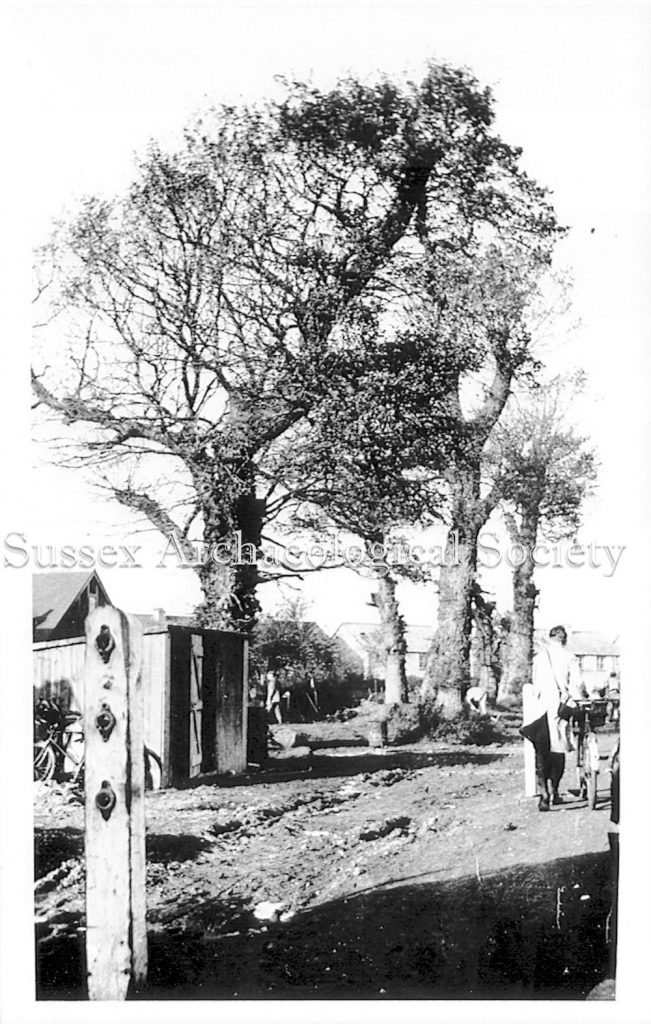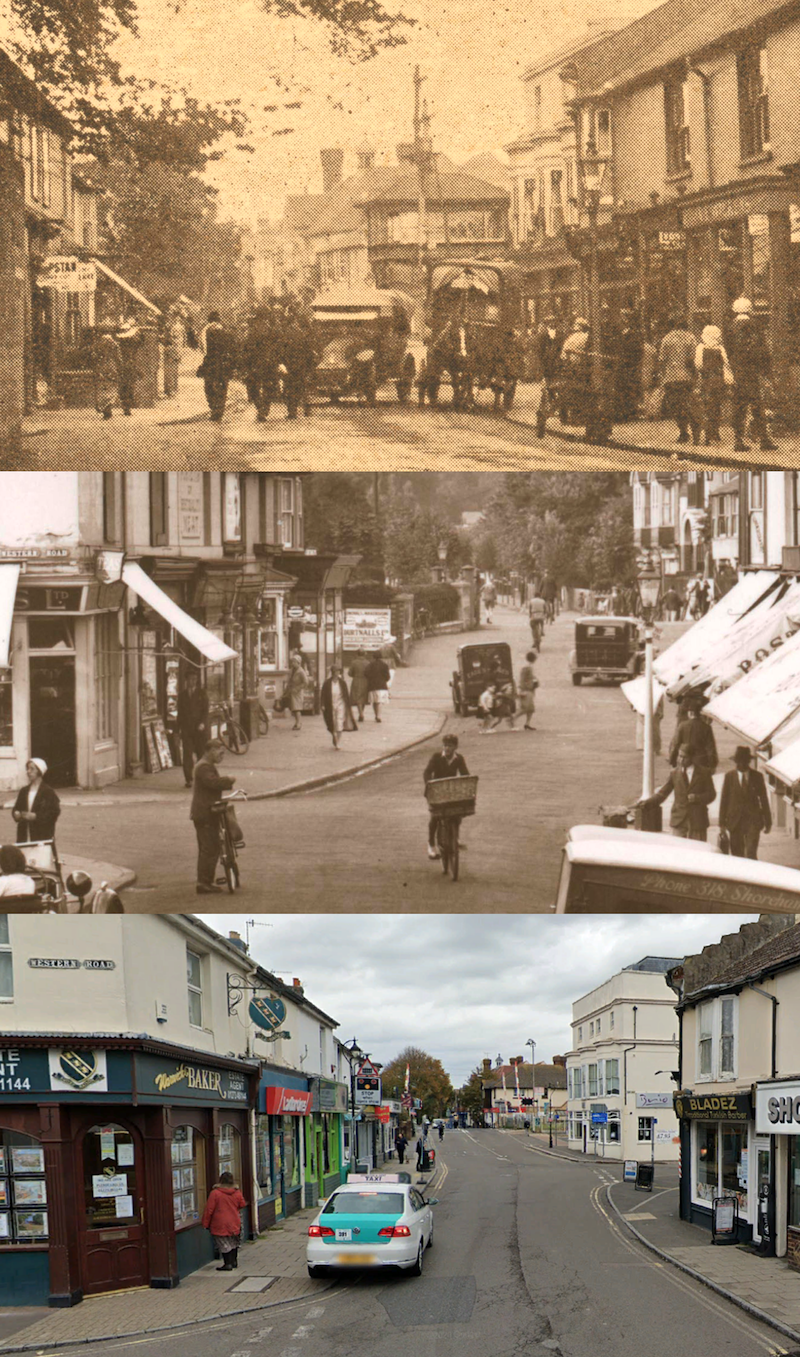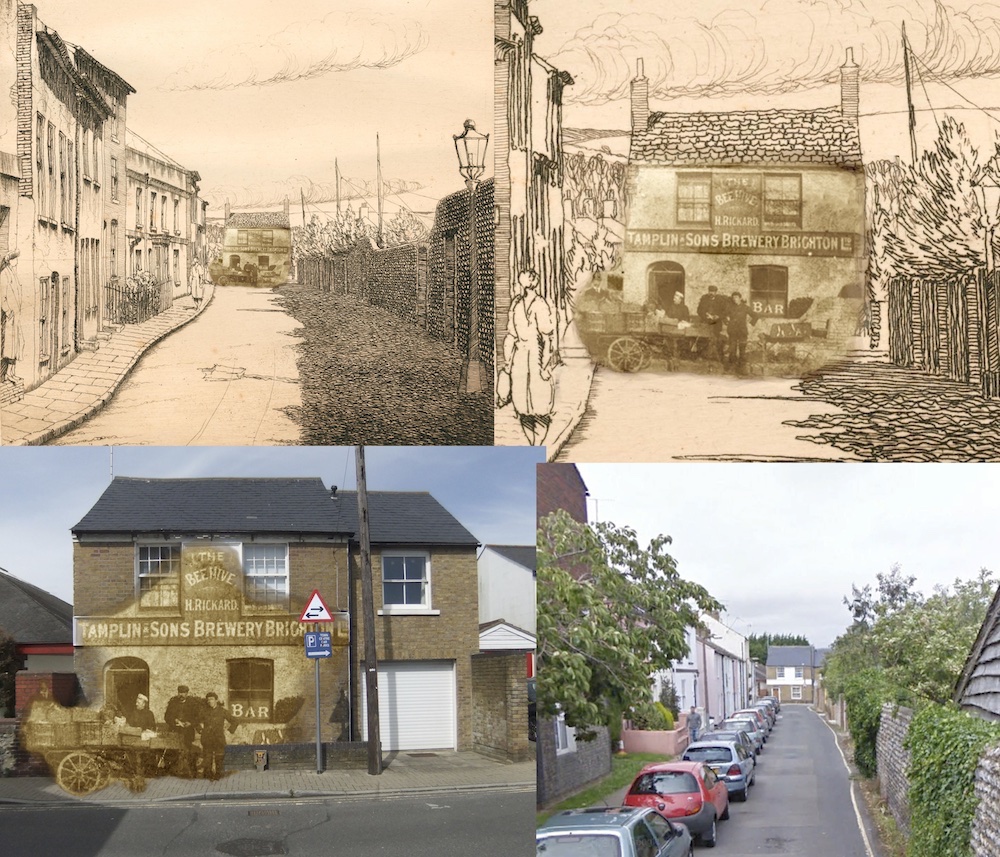
Brunswick Road over the decades
Day out to Bramber
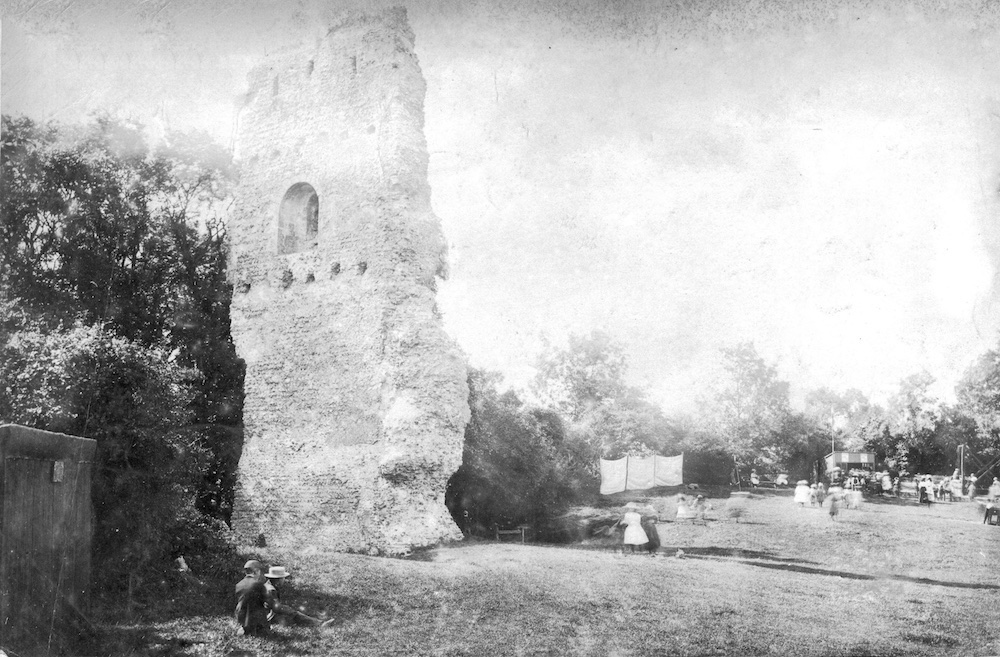
For me this photo (from the Winton Collection) is a fascinating record of the days when visits were organised for children from Shoreham and elsewhere that involved an exciting journey on the train to Bramber Castle and sometimes included modest fairground-like entertainment, stalls and swings etc.,
70 years apart
About 70 years between these two photos (c.1912 & 1980’s) not a precisely exact match but close enough for it to have been a near miss if both aircraft had been flying at the same time.
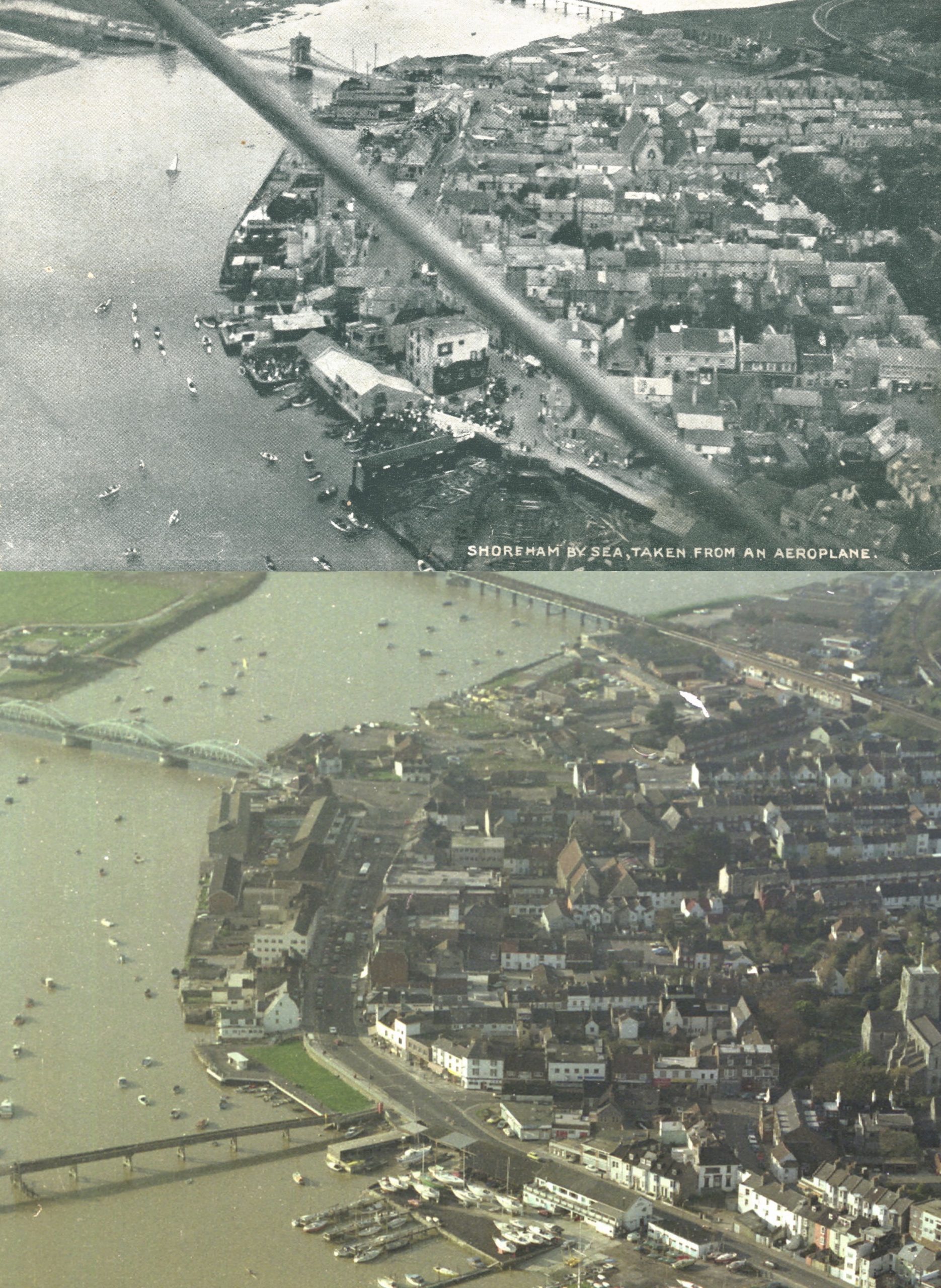
Mystery dock
Nelson writes:
Had some fun trying to identify the location of an old-ish painting recently (top left). The building on the right looks to be wooden. There is a finger of land in the centre foreground. There seems to be an opening to the river (centre right) that has been blocked off by timber work. If that is the Church of the Good Shepherd in the distance then perhaps we are looking from the old shipyards and shed on the right?
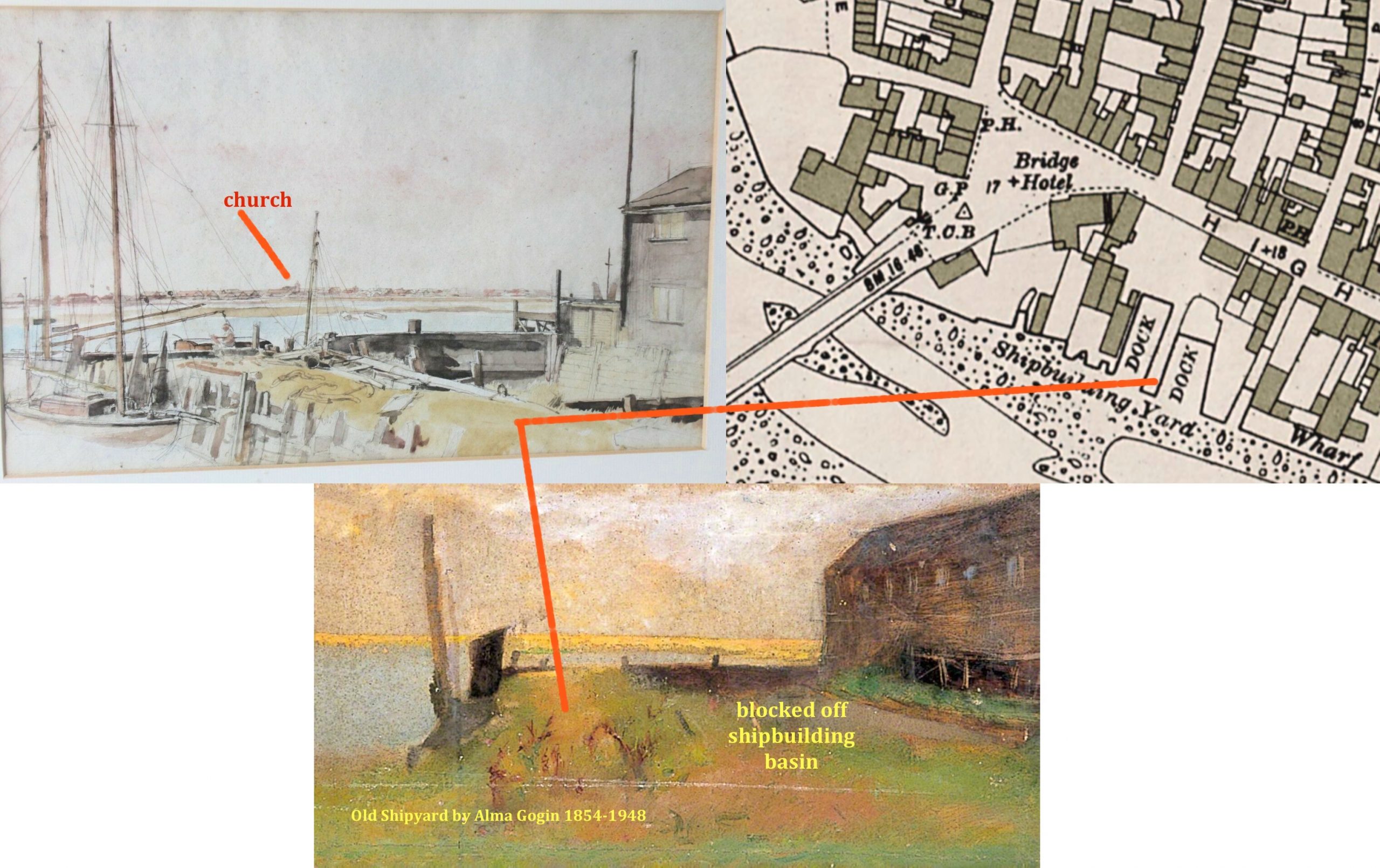
Football 1900’s
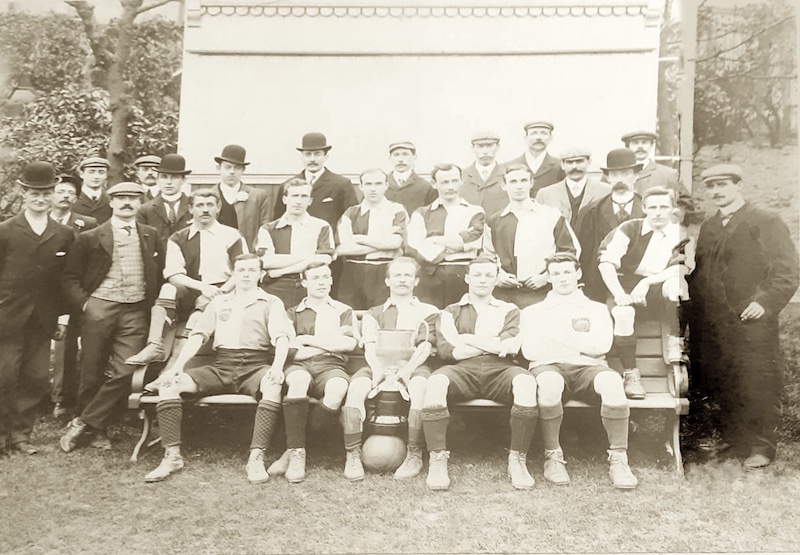
Nelson writes:
This photo has just come to light and we’ve identified most of the Shoreham FC players and the manager. The cup is the Royal Irish Rifles (later Royal Ulster Rifes) Charity Cup that Shoreham won twice. In 1903 when the RUR final was played at the Oxen Field (Windlesham Gardens area) and again in 1906 when it was played at the Goldstone Ground. The background more matches the Oxen Field I think added to which the players look a few years younger in that photo than those of later years so the photo is likely to be the Oxen Field in 1903
Trade tokens
1811 Clayton & Hyde Shilling Trade Token
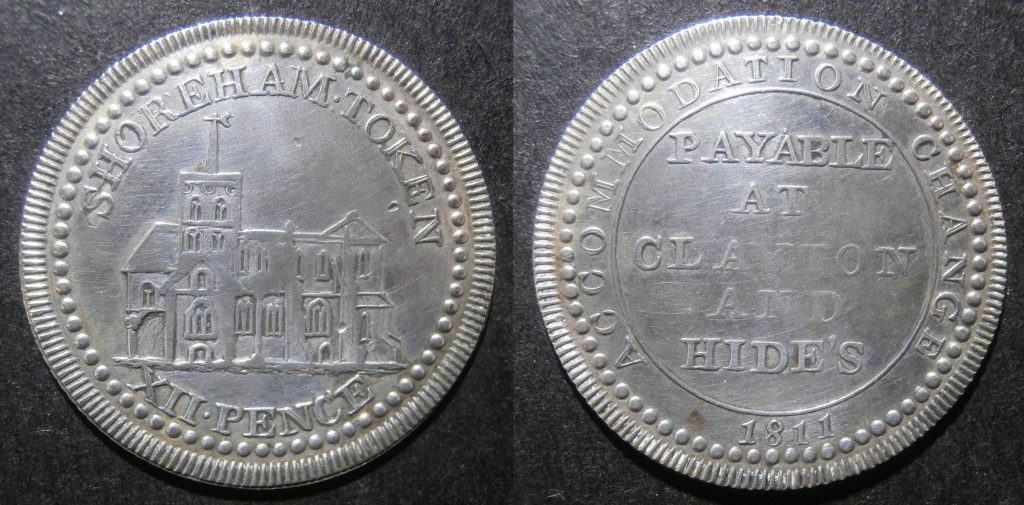
Nelson writes;
A period of coin shortage when the British Royal Mint almost ceased production making small change scarce prompted merchants in 1811 to produce tokens ‘for the accommodation (convenience) of the public.” These were issued by merchants with the agreement that they would be redeemed in goods to an equivalent value at the merchants’ own outlets. The transaction was therefore one of barter, with the tokens playing a role of convenience, allowing the seller to receive his goods at a rate and time convenient to himself and the merchant in order to tie the holder of the token coin to his shop.
We know little of Hide (or Hyde), probably Edward Hide who married Esther Rice in 1810, although it is a fairly well known Shoreham family name, mainly of mariners. The Claytons were mostly businesspeople who moved in the same circles as the well to do Tate, Hawkins and Rice families – all of whom had made their money in seafaring and property dealings.
East Street
Nelson writes:
East Street as it was with added close ups from our collections. Ellman Brown Estate Agents where the Tap House is now. George Hedgecock’s shoe shop now home to Teddy’s. Today’s Toast on the Coast replaces Arthur Eade’s bakery and in place of the East Street Arms is…. well nothing really, just a seat on the pavement on the side of La Patisserie.
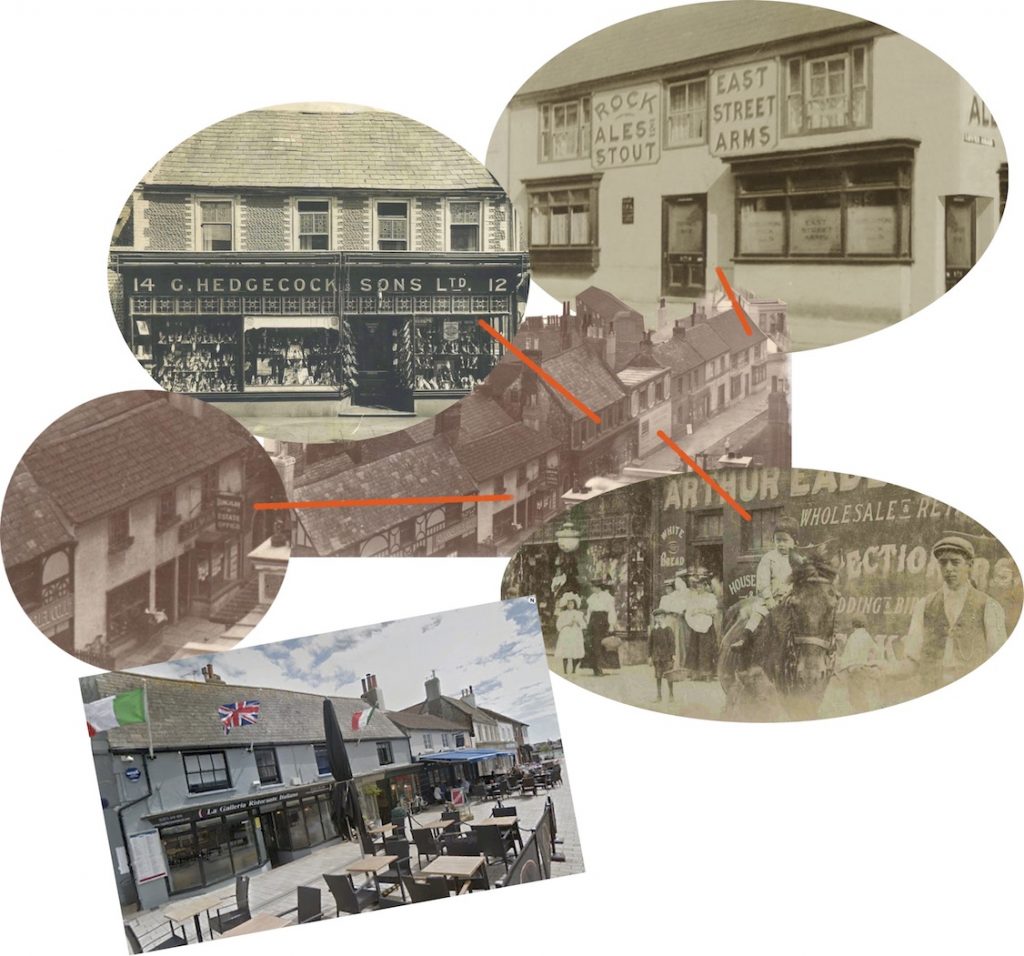
Mystery House
Nelson writes:
In the Sussex Archaeological Society’s Bob Hill Collection there are these two photos. One is of a mock-tudor house fronting on to a field(?) of maize and Lancing College in the background but there is no description. The other is of a man cropping maize in a field that the accompanying notes say was on the north side of Upper Shoreham Road between what is now Downsway and Buckingham Avenue.
Were both photos taken in close proximity to each other? Where is that house now?
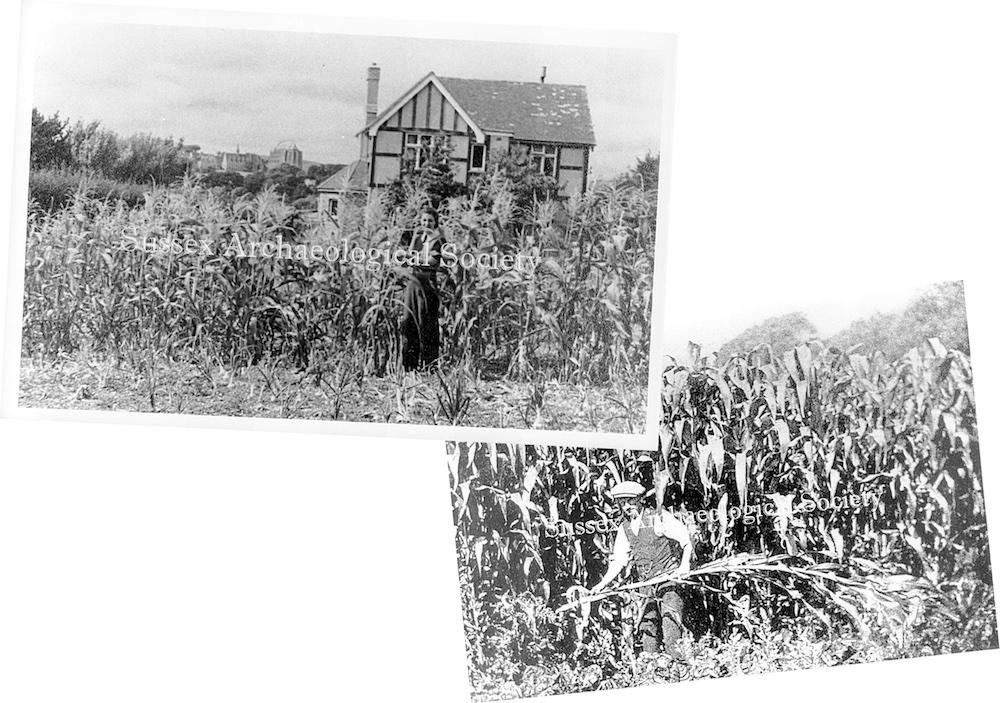
Connaught Avenue Elm Trees
Before Connaught Avenue was extended in the 1930’s and joined to the southern end “elm trees up to four feet in diameter stood in the middle of the road above Colvill Avenue up to the bend. You could walk either side of them.” (Nora Snelling, nee Hatcher, Connaught Avenue resident b.1910)
